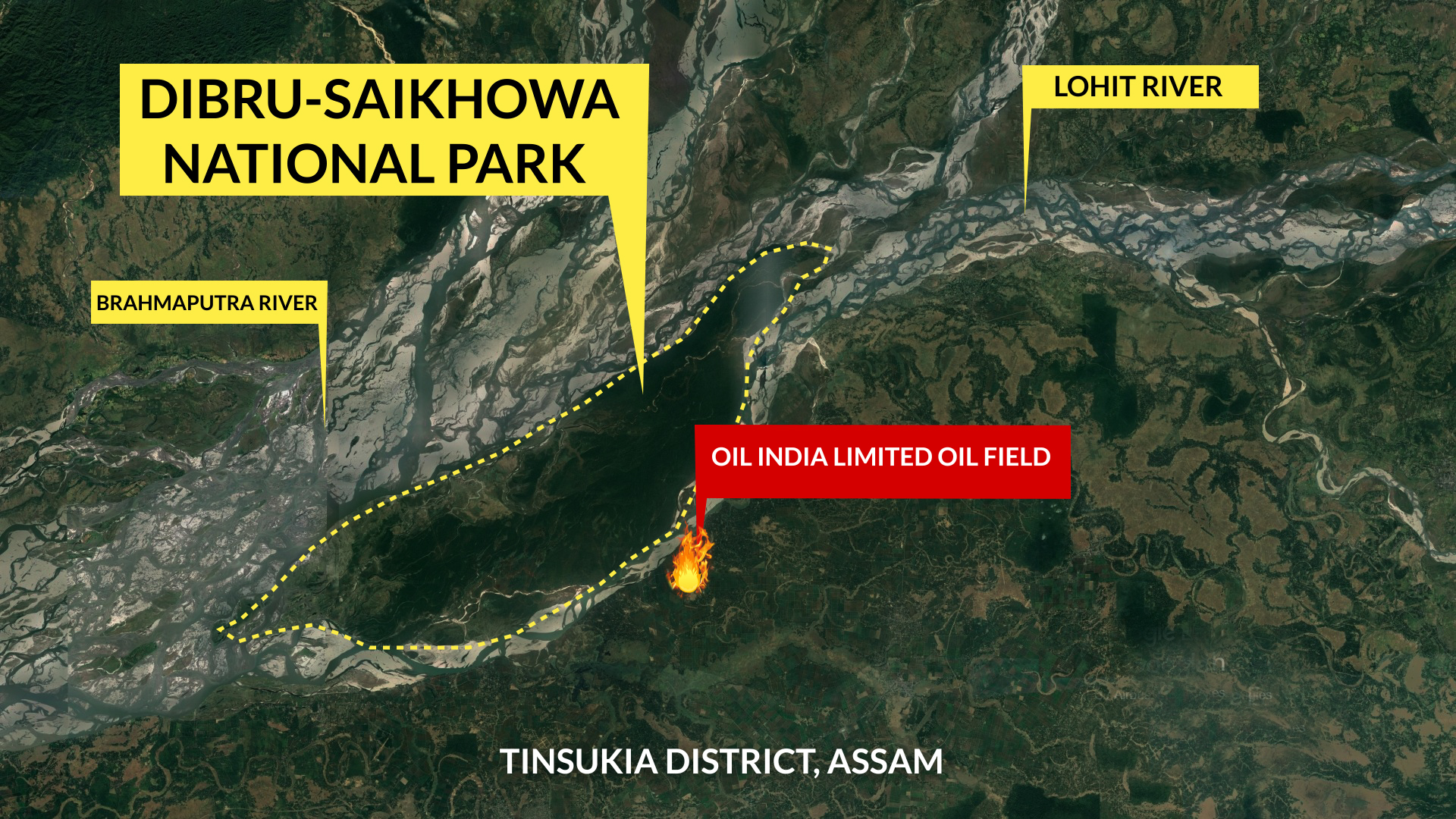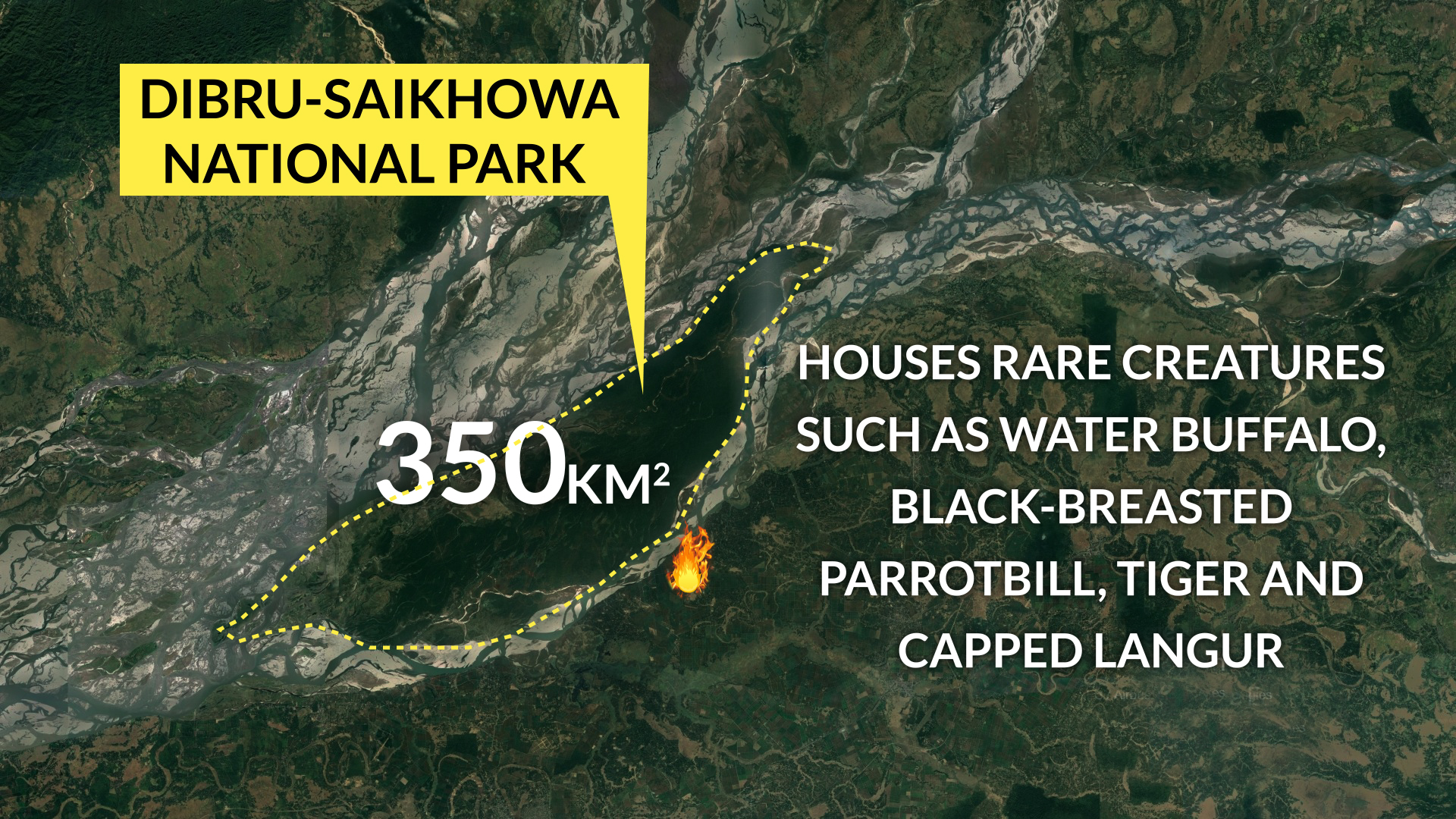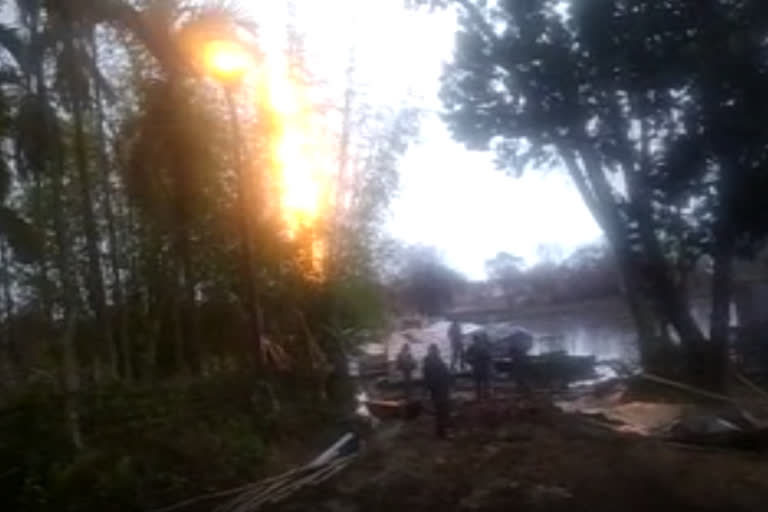Baghjan: The Oil India Limited’s effort to cap the oil well, which had been spewing gas and fire since last 66 days, at Baghjan in eastern Assam’s Tinsukia district failed on Friday after the crane used to cap the well with a Blow Out preventer (BOP) toppled over.
The local, as well as foreign experts, brought in from the USA, Canada and Singapore were planning to cap the fire-spewing oil well with a heavy metal lid by putting it on the mouth of the well.
BOP is a very heavy metal cover placed on the mouth of any gas or oil well to stop leakage of the fuel from under the ground.
The active oil yielding well of the OIL had been spewing gas since May 27th. Although the OIL authorities had been trying hard to contain the situation since then and even brought experts from USA, Canada and Singapore, yet a blow out took place on June 9th resulting in the death of two OIL staffers. The fire and gas had also damaged the lives and livelihood of many people in the adjoining villages.
"All operational crew reached site early in the morning today for carrying out the planned capping operation. BOP stack was hooked up with the Athey Wagon (a type of hydraulic lift) for placing on the wellhead. While the final capping operation was being attempted, the Athey Wagon toppled over at the last moment and the attempt did not succeed. Reasons for the same are being ascertained for next course of action," the Publis Sector Undertaking said in a statement.

Also read: Two firefighters die, over 1,610 families displaced in gas well blowout blaze in Assam
The OIL and Assam government also had to evacuate over 2500 families from the adjoining villages to the safety due to the blowout.
Today’s effort was stated to be a last-ditch effort put up by the experts to cap the well. Nothing is, however, as to when the next operation will be undertaken to cap the well and douse the fire.
Senior OIL officials refused to comment on the issue and only said that efforts are on to contain the situation.
It may be mentioned here that on July 22nd, the experts working on the site received injuries as there was another blast like the incident in the oil well when the experts were trying to douse the fire.
Well, number 5 at Baghjan has been spewing gas uncontrollably for the last 66 days since May 27 and it caught fire on June 9, killing two of OIL's firefighters at the site.

On July 22nd, three foreign experts from Singaporean firm Alert Disaster Control received burn injuries while they were removing a spool from the wellhead.
OIL said it continues to face protests and block across many of its wells and field locations, leading to heavy production loss in the last few months.
It said that due to blockades there was production loss of 652 MT of crude oil and 1.53 MMSCM of natural gas on Thursday because of disruptions in several oil and gas wells.
"Cumulative production loss since May 27, 2020, due to bandhs and blockades: 18,852 MT crude oil, 44.88 MMSCM of natural gas," the release said.
OIL said that various assessments and impact studies of the blowout, as well as the blaze in villages and nearby forest areas, are on by multiple agencies such as ERM India, TERI, CSIR-NEIST and IIT-Guwahati.
About the relief and rehabilitation process, OIL informed that the surveys for assessment of damage for compensation by Tinsukia district administration are in progress in both Tinsukia and Doomdooma circles.
(With inputs from PTI and ANI)
Also read: Baghjan fire: NGT imposes Rs 25 crore fine on Oil India Ltd



